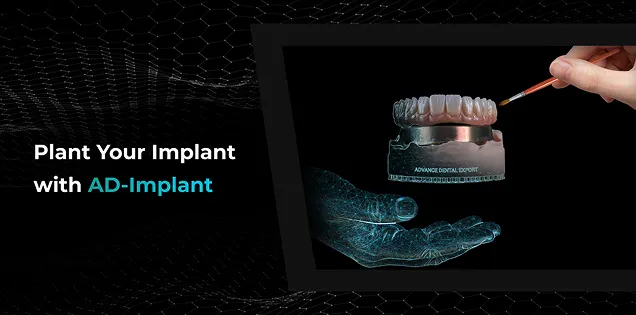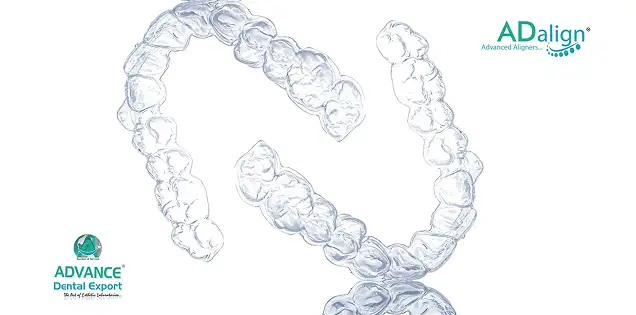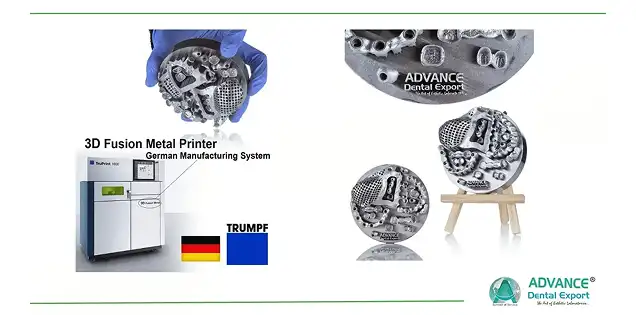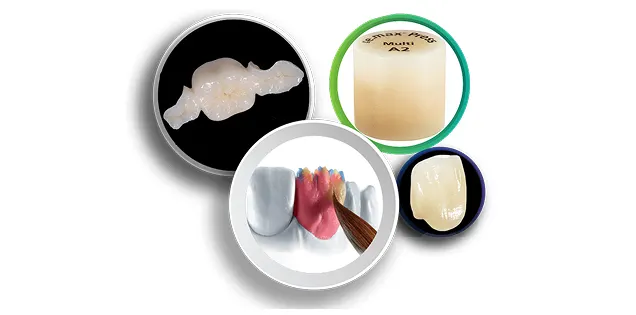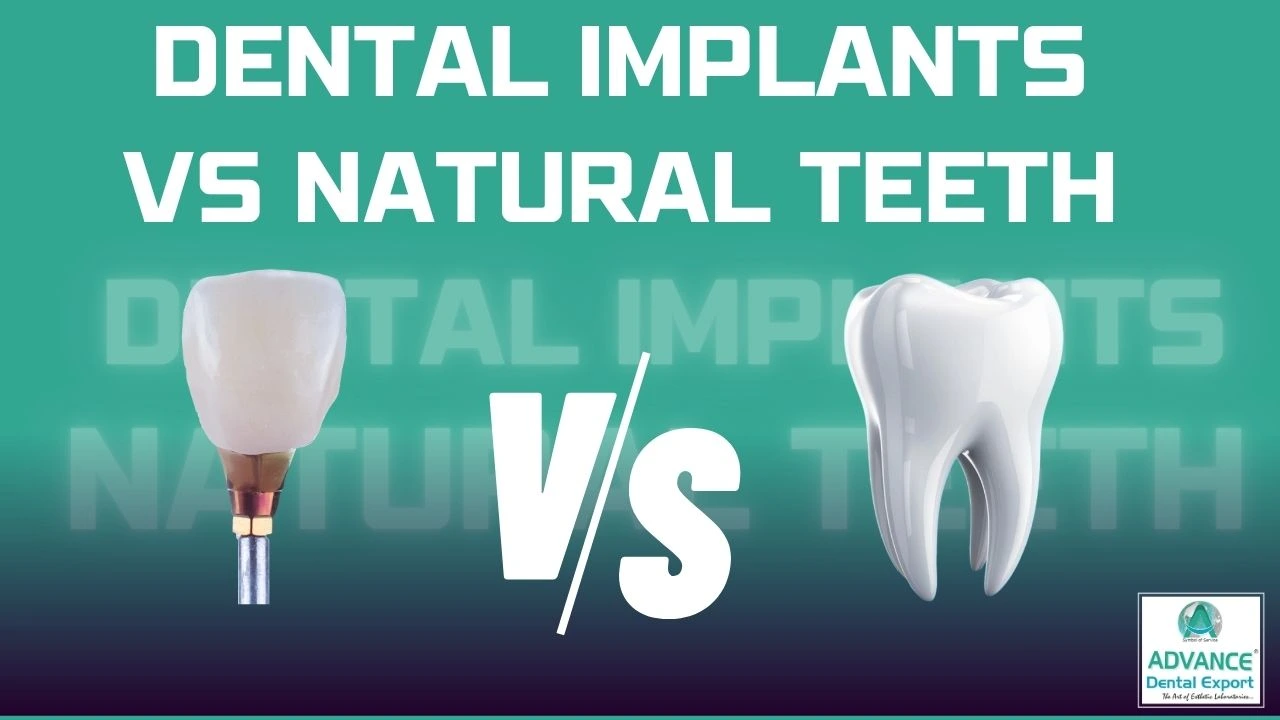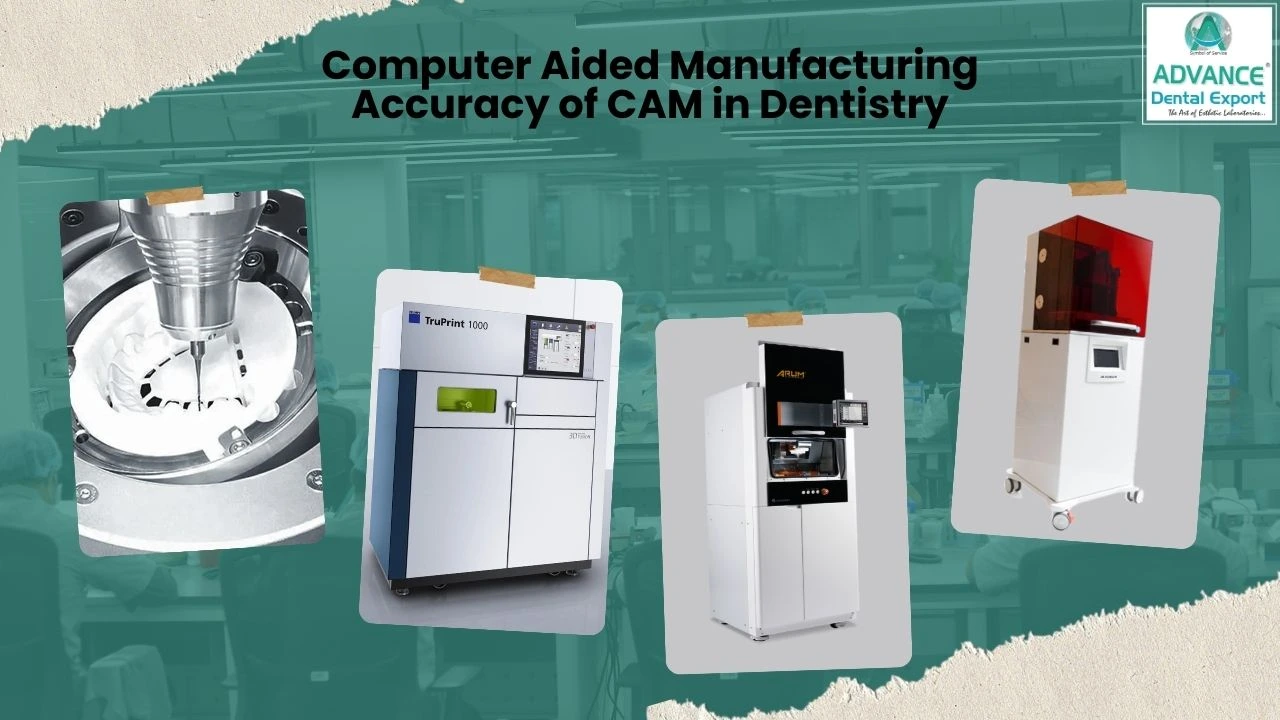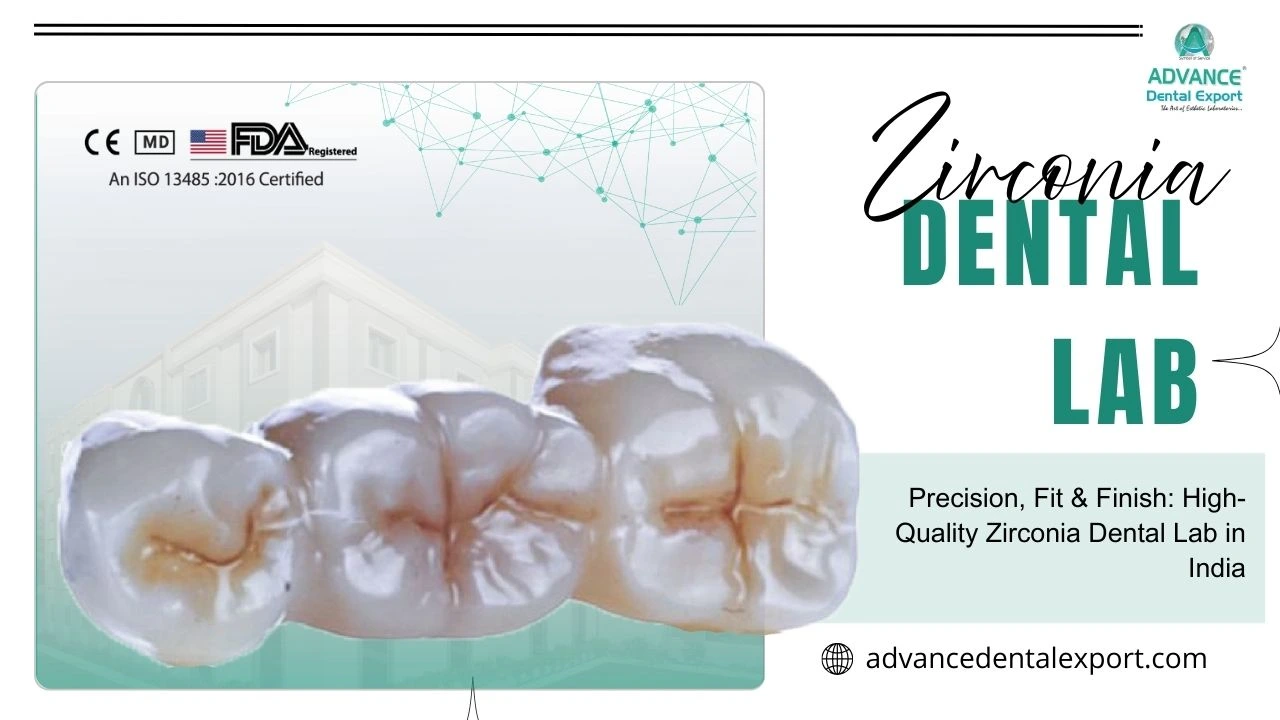Dental crowns – also known as tooth caps – are a mainstay of restorative dentistry. They fully cover a prepared tooth, restoring its shape, strength, and appearance. There are many types of dental crowns available today, each made from different materials with their own advantages.
As a dental professional in India, it’s important to understand the options (and local considerations like cost and availability) to choose the best crown for each patient. Let’s dive in with a quick refresher on the types of crowns and the dental crown choices available.
Why Do Patients Need Dental Crowns?
Dentists routinely recommend crowns (caps) to address a variety of clinical situations. Some common indications for a dental crown include:
- Teeth that have had endodontic treatment are weaker and prone to fracture, so a crown is placed to protect the remaining tooth structure.
- When a tooth is severely decayed, cracked, or has a very large filling, a crown can cover and reinforce the tooth, preventing further breakage.
- Crowns can restore the normal form and function of teeth that are worn (e.g., from bruxism) or poorly shaped.
- For severely discolored or misshapen anterior teeth, a crown (often an all-ceramic or porcelain crown) can dramatically improve appearance as part of a smile makeover.
- Crowns are placed on the teeth adjacent to a missing tooth to support a bridge pontic.
- On dental implants : A crown is the visible tooth-like restoration mounted on a dental implant fixture to replace a missing tooth.
- In children, prefabricated stainless steel crowns are often used on primary (baby) teeth that are badly decayed or after a pulpotomy. These tooth caps protect the baby tooth until it naturally falls out, saving the tooth structure and preventing pain or infection.
In short, crowns are a versatile solution to restore function and aesthetics when a simple filling won’t suffice. Now, let’s move on to dental crown types and classifications, focusing on the materials and categories of crowns commonly used in India.
Types of Dental Crowns (Classification by Material)
Dental crowns can be classified by their material composition and intended use (permanent vs. temporary). The major dental crown types used in clinical practice include metal-based crowns, porcelain-fused-to-metal, all-ceramic (metal-free) crowns, resin crowns, and special-use crowns like stainless steel. Each type has unique properties in terms of strength, appearance, longevity, and cost. Below is an in-depth look at each crown type along with its pros and cons, so you can make informed decisions on crown selection.
Porcelain-Fused-to-Metal (PFM) Crowns
Porcelain-fused-to-metal crowns have been a tried-and-true option for decades. A PFM crown consists of a sturdy metal substructure (often a base alloy like nickel-chromium or cobalt-chromium, or even gold alloy) with a layer of porcelain baked on top. This design attempts to balance strength and aesthetics: the metal provides a strong core, while the outer porcelain gives a tooth-colored appearance.
Advantages: PFM crowns offer reliable durability for chewing forces thanks to the metal base, and the porcelain veneer can be shade-matched to neighboring teeth. They are generally more affordable than newer ceramic crowns, making them a cost-effective choice for many patients.
Drawbacks: The porcelain layer can chip or fracture, especially if the patient has a heavy bite or grinding habit. Over time, as gums recede, the metal edge might become visible as a dark line near the gingiva, which is a cosmetic concern, particularly on front teeth. PFM crowns also require the removal of a moderate amount of tooth structure (to accommodate the metal and porcelain thickness).
Best uses: PFM crowns can be used on both anterior and posterior teeth. Many dentists in India still use PFMs for molars and premolars, or even front teeth, when the patient’s budget is limited, but some aesthetics are desired. They are a good middle-ground option – offering better appearance than all-metal crowns and better strength than all-ceramic (in some cases) – at a mid-range cost.
Zirconia Crowns
Zirconia crowns are among the most popular modern crown types, prized for their combination of strength and aesthetics. Zirconia is a high-strength ceramic (zirconium dioxide) that is milled using CAD/CAM technology. These crowns come as monolithic zirconia (a single solid piece) or layered zirconia (a zirconia core with a thin porcelain layer for enhanced translucency).
Explore Our Restorations
Advantages: Zirconia is extremely strong and durable – tough enough for bruxers and heavy chewers. Monolithic zirconia crowns are virtually unbreakable in normal function and can last many years. This material is also tooth-colored and metal-free, so it is quite aesthetic (especially newer high-translucency zirconia formulations) and causes no metal allergy issues. Minimal tooth reduction is needed compared to PFM, and there’s no risk of a metal line showing later.
Drawbacks: Pure zirconia, while white, can be less translucent than natural enamel, so fully monolithic zirconia crowns may appear a bit opaque or flat on front teeth compared to layered porcelain. However, newer generation zirconia materials have improved translucency. Another consideration is that zirconia is so hard that it can cause wear on opposing enamel if the crown’s surface is too rough – careful finishing and polishing are needed. In terms of cost, zirconia crowns are typically more expensive than PFM or metal crowns due to the advanced materials and technology involved.
Best uses: Zirconia crowns are excellent for posterior teeth (molars) where high strength is paramount, including patients who have attrition or grinding habits. They are also increasingly used for anterior teeth in cases where the patient desires a metal-free restoration and good aesthetics, though for absolute lifelike translucency on an incisor, some dentists might still prefer an E-max or layered ceramic.
All-Ceramic (Porcelain) Crowns (E-max and others)
All-ceramic crowns are metal-free restorations made entirely of porcelain or other advanced ceramics. They encompass various sub-types, the most notable being lithium disilicate crowns – commonly known by the brand name E-max – and other specialized porcelains. These crowns are renowned for their superb aesthetic qualities, as they can mimic the translucent luster of natural enamel very closely.
Advantages: All-ceramic crowns provide the best cosmetic result. They have a translucency that blends seamlessly with natural teeth, making them ideal for front-tooth restorations where appearance is critical. They are also biocompatible and a great choice for patients with metal allergies or sensitivities.
Drawbacks: Traditional porcelain crowns (and even E-max to a degree) are made of glass-ceramic, which, while hard, can be more brittle than zirconia. They are generally not recommended for patients with heavy biting forces on molars, as they could crack under extreme pressure.
Best uses: All-ceramic crowns shine in the anterior region – e.g., upper incisors, canines – where achieving a natural appearance is the top priority. For a patient who wants the most natural-looking tooth cap, a well-made E-max crown is often the go-to choice.
Metal Crowns (Gold and Base Metal Alloys)
Metal crowns refer to crowns made entirely of metal alloy. This category includes high-noble metals like gold as well as base-metal alloys such as nickel-chrome or cobalt-chrome. An all-metal crown may not win any beauty contests due to its color, but it still has important uses in dentistry.
Advantages: Metal crowns are exceptionally durable and strong. They can withstand heavy chewing forces and rarely chip or break (since there’s no porcelain layer). Because metal is tough even in thin sections, these crowns require the least amount of tooth removal – a big advantage when conserving tooth structure is important.
Drawbacks: The obvious disadvantage is aesthetics. A metal crown is silver or gold in color and is quite visible if used on a front tooth; therefore, they are typically restricted to molars or teeth not in the smile line.
Best uses: All-metal crowns are a smart choice for posterior teeth (especially second molars) where appearance is less critical but strength and longevity are paramount.
Stainless Steel Crowns (Prefabricated)
Stainless steel crowns (SSC) are pre-made metal crowns typically used as a temporary or interim solution, or for pediatric dentistry. Unlike custom-fabricated crowns, SSCs come in standard sizes.
Uses in children: Pediatric dentists often use stainless steel crowns to restore badly decayed primary molars. They are favored by kids because they are quick to place (no lab wait), inexpensive, and durable enough to hold space until the baby tooth exfoliates.
Uses in adults: Occasionally, stainless steel crowns serve as a temporary crown on a permanent tooth – for instance, after a root canal on a molar, an SSC might be placed temporarily if a custom crown can’t be made immediately.
Pros & Cons: Stainless steel crowns are very cost-effective and provide full coverage protection. However, they are obviously not tooth-colored (they look like a silver cap), and their fit is not as precise as a lab-made crown.
Composite Resin Crowns
Resin crowns (usually composite resin) are another type of crown, though they are relatively rare as a long-term permanent crown choice. These are made from tooth-colored composite material similar to what’s used for fillings.
Advantages: The main benefit of composite resin crowns is that they are low-cost and can be made quickly. They can be a feasible option for a temporary cap while waiting for a lab-fabricated crown.
Drawbacks: Resin is less durable and wears down faster than metal or ceramic. Composite crowns are prone to staining, discoloration, and can chip or fracture more easily under pressure. They also don’t last as long – a resin crown might only be expected to serve for a few years in function before needing replacement.
Best uses: Use composite crowns when you need a temporary fix or when finances are a major issue, and the patient understands the limitations.
Temporary Crowns (Provisional Crowns)
It’s worth separately noting temporary crowns, even though they might be made of materials mentioned above (resin or metal like stainless steel). Temporary crowns are used to protect the prepared tooth and maintain aesthetics and function in the interval while a permanent crown is being fabricated.
Looking for a trusted lab partner? Get high-precision restorations from Advance Dental Export
Characteristics: Temporary crowns are usually made of acrylic resin or polycarbonate for front teeth (to offer a tooth-colored appearance), or sometimes aluminum/stainless steel forms for molars. They are designed to be easily removable.
Importance: Even though they are short-term, temporaries are important for patient comfort–they cover the exposed dentin to prevent sensitivity, hold the tooth position so it doesn’t shift, and allow the patient to chew and smile normally for a couple of weeks.
Limitations: Provisional crowns are not as strong or well-fitted as permanent ones. They can fracture or come off if the patient eats something very hard or sticky. They also may not match the surrounding teeth as perfectly.
In summary, when discussing types of tooth crowns, we have to consider both the permanent crown types (like PFM, zirconia, all-ceramic, metal, etc.) and the temporary solutions that bridge the gap during treatment. Now that we’ve covered the types of crown materials and their features, let’s talk about how to decide which crown is right for a particular situation.
How to Select the Right Crown for Your Patient (Crown Selection Guide)
Choosing the ideal crown type involves weighing several factors. Here are some key considerations for crown selection in practice:
Tooth Location
The position of the tooth in the mouth is a major factor. For front teeth, aesthetics usually take priority – so tooth-colored options like all-ceramic (E-max) or high-translucency zirconia are preferred. For back teeth (molars under heavy load), strength and durability are crucial – zirconia or metal crowns often make the best choice here.
Aesthetic Demands
How important is it that the crown is indistinguishable from a natural tooth? If your patient is very conscious about cosmetics (say, a young professional with a front-tooth fracture), then an all-ceramic crown offers the most lifelike result.
Strength and Bite Forces
Does the patient have bruxism or a history of cracking teeth/restorations? For those with heavy parafunctional habits, stronger materials are indicated. Full zirconia crowns are virtually unbreakable in such conditions, whereas porcelain could chip under extreme force.
Allergies or Sensitivities
If a patient has a known metal allergy (e.g., to nickel), you should avoid any crown containing base-metal alloys. In these cases, all-ceramic or zirconia crowns are the safest options.
Tooth Preparation and Remaining Structure
Sometimes the condition of the tooth influences the choice. If very little natural tooth remains (maybe a big chunk broke off), a stronger crown like PFM or zirconia, possibly with a post-core foundation, may be necessary to prevent fracture.
Cost and Patient’s Budget
In India, cost considerations often play a significant role in crown choice. It’s important to present the patient with options in different price ranges. Metal crowns are the cheapest, PFM in the middle, and zirconia/E-max on the higher end. For instance, if a patient needs multiple crowns and has limited resources, you might suggest PFM crowns on back teeth to save cost, versus if budget isn’t an issue, premium zirconia or all-ceramic across the board for maximum benefit. Always be transparent about the price vs performance of each type.
Turnaround Time and Lab Capabilities
In some urgent cases, the speed of getting the crown made can influence your decision. If your lab has CAD/CAM capabilities for zirconia that can deliver a crown faster, or if you have in-office milling for same-day crowns (some Indian practices now have chairside CAD/CAM units), you might opt for those materials.
Patient Preferences
Lastly, consider any specific preferences the patient has expressed. Some patients specifically ask for “ceramic caps” because they’ve heard they are the best – in such cases, if clinically suitable, you can oblige with an all-ceramic or zirconia restoration.
By considering these factors, you can tailor the crown choice to each clinical situation. The goal is to find the crown that best meets the functional requirements while also satisfying the patient’s expectations for appearance, comfort, and longevity.
Conclusion
Finally, if you’re looking to enhance your expertise in restorative options or want guidance on complex crown cases, consider reaching out for specialized training or workshops offered by dental academies in India . Staying at the forefront of crown technology and technique not only improves patient outcomes but also sets your practice apart.

